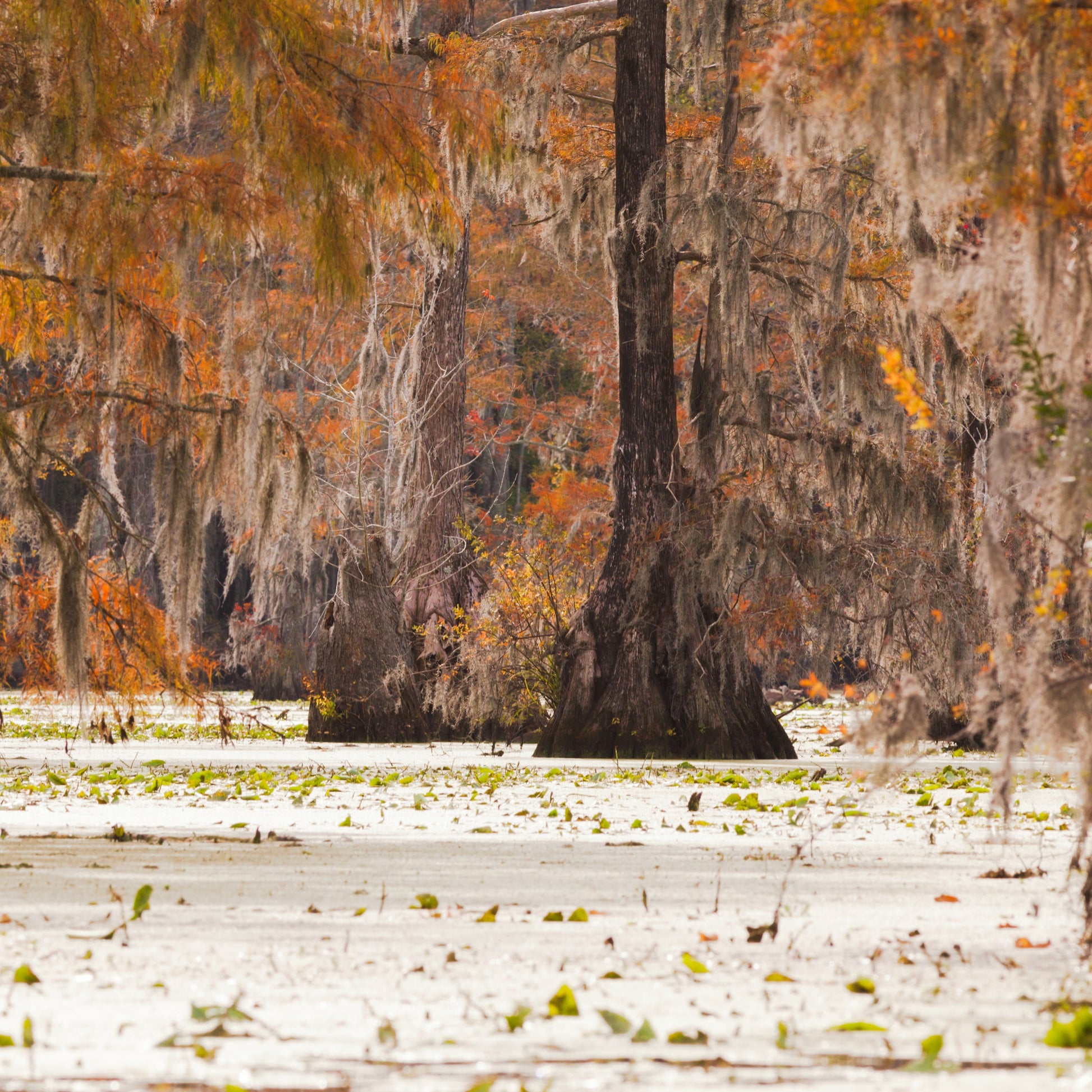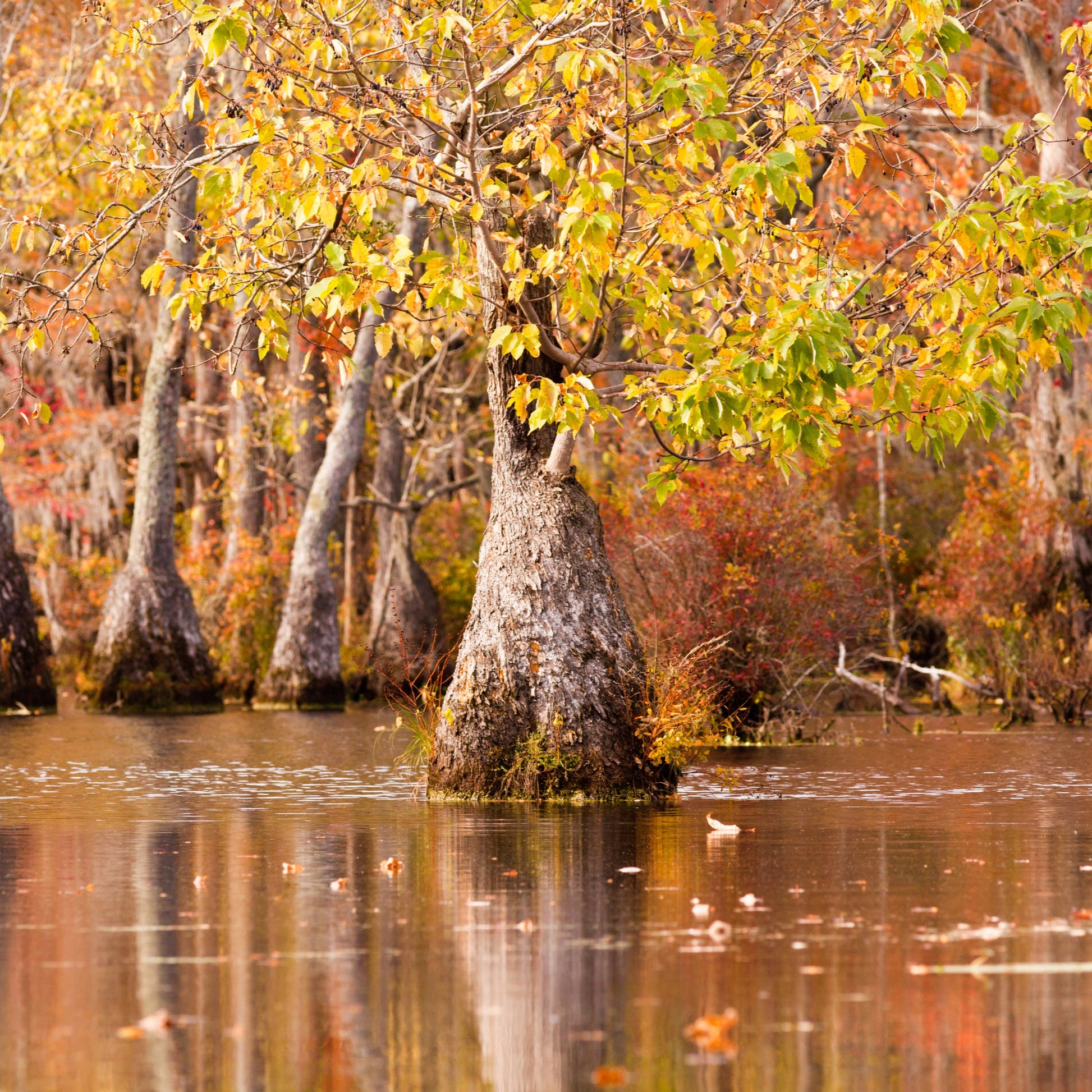Limited Quantities - Reserve Now For Fall
-
Intermediate Zones 6-9

-

Water Tupelo Tree
Water Tupelo Tree
Couldn't load pickup availability
Nyssa aquatica
Water Tupelo Tree
The Water Tupelo Tree is a majestic native tree known for its ability to thrive in deep water and flood-prone environments, making it a cornerstone species in southern swamps, floodplains, and wetland restoration. With its broad crown, strong central trunk, and glossy foliage, it offers both ornamental beauty and critical ecological function.
Ideal for wetland restoration, wildlife habitat, and waterside landscaping, Water Tupelo trees support birds, pollinators, and aquatic ecosystems while delivering impressive seasonal color and structure.
Water Tupelo Tree Overview
| Attribute | Details |
|---|---|
| 🌿 Botanical Name | Nyssa aquatica |
| 🏷️ Common Names | Water Tupelo, Cotton Gum, Tupelo Gum |
| 🌳 Mature Height | 50–80 feet |
| 🌐 Mature Width | 20–30 feet |
| 📈 Growth Rate | Moderate (1–2 feet per year) |
| ⏳ Lifespan | 80–150+ years |
| 🧊 USDA Zones | 6–9 |
| ❄️ Chill Hours | 400–700 hours |
| ☀️ Sun Preference | Full sun to partial shade (best growth in full sun) |
| 🧱 Soil Type | Wet, heavy clay, loam, or periodically flooded soils |
| ⚖️ Soil pH | Slightly acidic to neutral (5.5–7.0) |
| 💧 Water Needs | High; tolerates prolonged flooding and standing water |
| 🍁 Foliage Color | Bright green in summer; golden to bronze in fall |
| 🌸 Flower Color | Small greenish-white blooms in spring |
| 🐝 Pollination | Attracts bees, birds, and aquatic wildlife |
| 🌿 Growth Habit | Upright, spreading canopy with a single dominant trunk |
| ↔️ Spacing | 25–40 ft for waterside or restoration planting |
| 🏡 Landscape Uses | Wetlands, rain gardens, floodplains, native reforestation |
| 🧹 Maintenance Level | Low once established |
Environmental Benefits
🌧️ Thrives in deep water and flood-prone areas, supporting hydrology
🪶 Provides critical food and nesting habitat for birds and aquatic life
🌿 Helps stabilize soil and reduce erosion in wetland systems
🌸 Supports pollinators and biodiversity with seasonal blooms
Pros & Cons
| ✅ Pros | ⚠️ Cons |
|---|---|
| 💧 Exceptionally flood-tolerant and water-adapted | 🌱 Not suitable for dry, upland sites without irrigation |
| 🐝 Supports aquatic ecosystems and wetland biodiversity | 📏 Large size and strong root system limit use in small landscapes |
| 🌿 Long-lived with structural elegance and fall color | ✂️ May need space to develop naturally in managed landscapes |
| 🧬 Essential for reforestation and native restoration zones | ❄️ Performs best in warm, humid regions with seasonal rainfall |
| 🌳 Provides canopy cover and shade in floodplain settings | 🐌 Establishment can be slow in compact or poorly prepped soils |
Planting & Care Guide
🛁 Soak or hydrate root zone before planting in saturated soil
🕳️ Dig a wide, deep hole in moist ground; plant at same level as in nursery
🌾 Apply mulch 2–3 inches thick around base to retain moisture and protect roots
💦 Water regularly if planting outside floodplain; thrives in saturated conditions
✂️ Prune only to remove dead wood or shape young trees
🧪 Fertilize in early spring if soil is nutrient-poor; prefers organic matter-rich soils
The Water Tupelo Tree is a wetland powerhouse, offering stability, habitat, and stunning seasonal color in even the most flood-prone landscapes. Whether anchoring a rain garden, restoring a swamp, or supporting aquatic wildlife, this native species is a resilient and beautiful solution for water-wise planting.
Share




